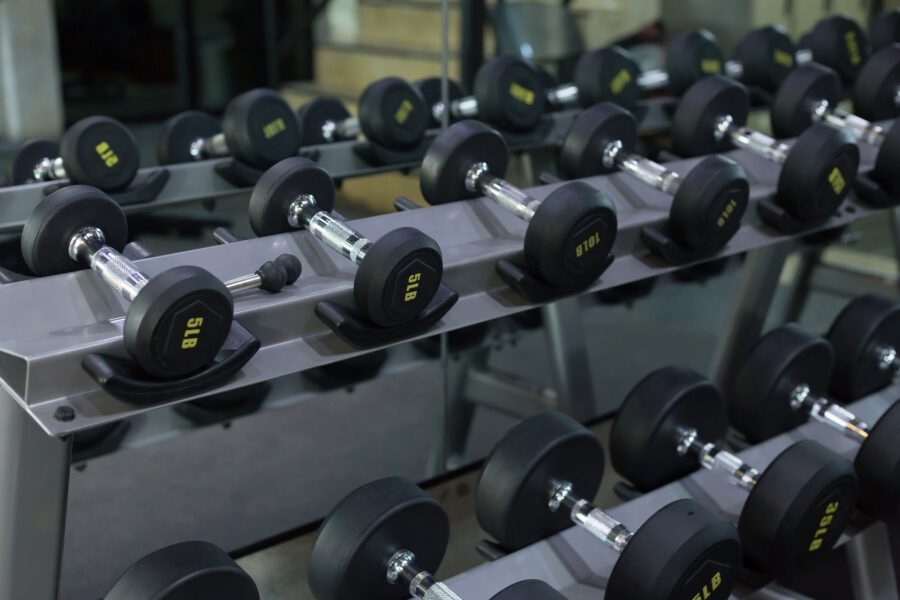The most important factor when it comes to packing muscle mass onto your frame is selecting the right exercises. After all, if you’re not stimulating the muscle the right way, you’re not going to force it to grow. Once you’ve got your exercise choices down, you need to start narrowing in on your set and rep scheme. That, though, can be trickier than it sounds. In this article, I’ll provide you with a common-sense set and rep protocol to maximize your muscle-building potential.
Look around the internet and you’ll find all manner of set and rep protocols, from 5 sets of 5 to 10 sets of 10 and everything in between. However, those numbers are meaningless unless they are linked to the amount of resistance that you’re using. After all, you could be doing 5 sets of 5 reps with a weight that’s either too heavy or too light and get absolutely no benefit from the workout whatsoever.
So, a set and rep scheme is only as good as the intensity that goes along with it. How, though, do you know what the right intensity is?
You have to give your muscle enough intensity to stimulate growth but not so much that it compromises volume. If you took every set to complete muscular failure, where you could not complete another rep with proper form, you would be stepping over that threshold.
In a 2016 meta-analysis that considered 8 separate studies it was concluded that …
similar increases in muscular strength can be achieved with failure and non-failure training. Furthermore, it seems unnecessary to perform failure training to maximize muscular strength; however, if incorporated into a program, training to failure should be performed sparingly to limit the risks of injuries and overtraining.
To achieve the balance between training with enough intensity to stimulate growth and not too much to compromise your training volume, you should select a resistance that has you working at 80-90 percent of your threshold. In other words, if you are doing 10 reps, the first six will be reasonably comfortable; from rep seven you are being challenged and the last three are difficult but do not fully exhaust your strength reserves. At the end of the set, you should feel like you can do one more rep.
Whether you are doing 6, 12 or 30 reps, you should use an intensity parameter of 80-90 percent to help you get the right resistance level.
The question of how many sets to do is a hotly debated topic in bodybuilding. High Intensity advocates of the Mike Mentzer school of training advocate going as low as one all-out set per body part while others recommend marathon gym sessions that see you blasting out up to 20 sets for each muscle. As with most things, common sense (and the research) suggests a medium somewhere in the middle.
Several studies have confirmed that an increase in sets leads to a corresponding increase in muscle and strength. In other words, doing 4 sets for the chest is more beneficial than just doing one set. The question, though, is what is the cut-off point when doing more becomes detrimental.
That’s the question that researcher James Kruger wanted to answer in a 2017 meta-analysis. He found that cut-off point to be 10 sets per muscle group. Beyond that point, he found that there was a slight diminishing return in terms of muscle growth and strength and an impairment of recovery ability.
The 10 set number is a general guideline, with larger muscle groups tolerating slightly more and larger muscle groups slightly fewer. Each of us needs to experiment to find our own sweet spot but I suggest using the following numbers as a baseline:
- For your major muscle groups (Chest, Lats, Quads, Hamstrings,) do 12 sets
- For your minor body parts (Biceps, Triceps, Deltoids, Forearms, Abdominals, Hamstrings, Calves) do 8 sets per body part.
The main thing to keep in mind here is that each person’s body is different. We all need to figure out what works best for us. So, train in accordance with this set protocol for 6 weeks and monitor how your body responds. If you feel that you can do a little more, add a couple of sets and if it seems too much cut back slightly.
For decades the accepted method to build muscle has been to train within a rep range of 6-12 reps. Go higher than 12 reps, we’ve been told, and you’ll be in the endurance and ‘muscle definition’ zone. Recent research, however, suggests that full muscle development requires a broader rep range than has previously been thought ideal.
A study that was published in the Journal of Strength and Conditioning Research compared the effect of low rep (8-12) training with a high rep (25-35) in terms of muscle growth. They found that, although the low rep group ended up being stronger, the changes in muscle growth were the same.
That makes sense. High rep training is the fastest way to deplete the glycogen stores in your muscles. In response, the body will create more muscle glycogen, causing the muscle cell to stretch and releasing anabolic hormones that promote protein synthesis.
Another benefit of high rep training is that it promotes occlusion, which is when the blood remains in the muscle being trained. This promotes the increase of mTOR (mammalian target of rapamycin) levels, which improve muscle protein synthesis. Occlusion also generates higher levels of lactic acid, which also promotes protein synthesis.
Training in the 1-3 rep range has been shownto prioritize strength over muscle growth. Between 4 and 8 reps will increase both strength and size of the muscle.
So, what do we learn from all of this?
To fully develop the muscle we should use a rep range that goes as high as 30 and as low as 4. So, how do we do that?
Let’s look at an example …
You’re doing a chest workout that consists of 12 sets in total, divided into 2 exercises, the seated cable chest press, and the decline dumbbell press. You’ll be doing six sets of each exercise. Here’s a rep scheme you could follow:
- Set One - 25 reps
- Set Two - 15 reps
- Set Three - 10 reps
- Set Four - 8 reps
- Set Five - 6 reps
- Set Six - 4 reps
This rep scheme serves several purposes. The first set acts as a general warm-up to the working muscle while also flushing blood into the area and promoting occlusion. You then add weight for each succeeding set in accordance with the suggestions in the section above on intensity. Each set works your muscle fibers (fast and slow twitch) slightly differently. When you get to your last two sets you are pushing max weight for optimum hypertrophy potential.
Once you’re done, with your last set, don’t forget to send a few minutes stretching your muscles to promote optimum recovery.
Here's a workout you should try:
The 3 key takeaways regarding sets and reps are:
- Choose a weight for each set that allows you to train at an intensity level of 80-90 percent regardless of the rep range.
- Experiment to work out your ideal set range, working from a baseline of 12 sets for major muscle groups and 8 sets for minor muscle groups.
- Use a descending rep range starting relatively high (20-30) and working down to a low of 4-6.

